[ Guardinals ] [ Custodian | Luminary | Scout | Yeoman ] [ Unique | Paragons ]
Faces of Good: the Guardinals
Also known as: Agathions
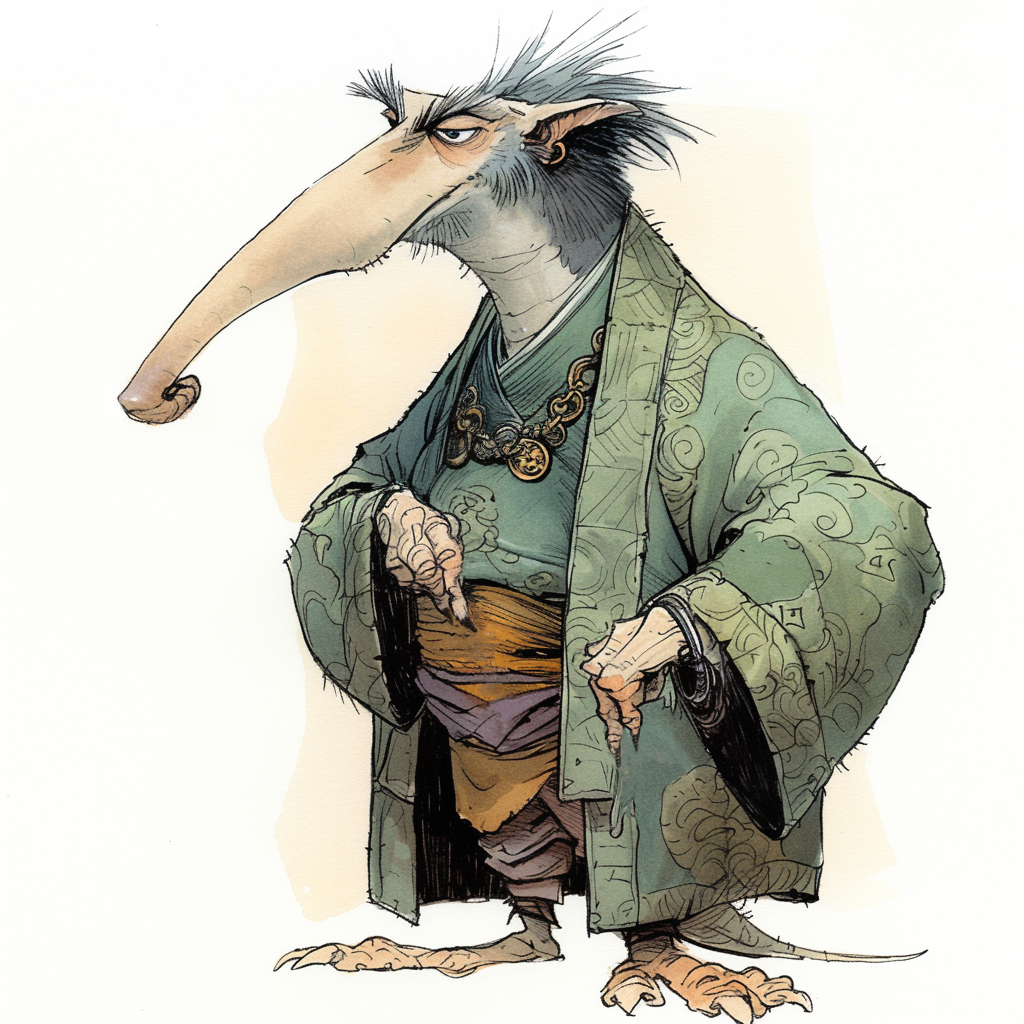
“For this entry I have invited Remon, a welcoming tamandual guardinal with the head of an anteater. I met him during my voyage through Belierin, and if not for his help I might have not survived to write another chapter.“
Ah, Elysium, my pristine home. Here lies the pinnacle of goodness, the perfect plane, where Goodness is always rewarded with Goodness, where mind and soul are laid bare within you, to be found and healed. Who could ever desire to tarnish such beauty? I guess we can never fully comprehend such matters. But nonetheless, Elysium needs protectors.
We are called Guardinals—noble celestial folk of pure Goodness unsullied by Law or Chaos, the caretakers of Elysium, the mediators of Balance of the Heavens and fierce defenders of our ideals. But not me of course. I’m just a simple ant farmer. Though, if push comes to shove, any evildoer had better be ready to test my claws.
What is our origin?
| Guardinal | Philosophical Animal | CR |
|---|---|---|
| Aequoreal † | Jellyfish dreamers | 2 |
| Ardeidal ‡ | Heron pilots | 4 |
| Avoral | Messenger hawks | 9 |
| Bohlinidal ‡ | Giraffe seers | 12 |
| Bombyxial † | Moth guides | 7 |
| Caninal ‡ | Loyal hounds | 3 |
| Caprinal | Freedom-loving deer | 5 |
| Cervinal ‡ | Noble stags | 17 |
| Cetaceal ‡ | Orca defenders | 15 |
| Chelonidal † | Defensive turtles | 7 |
| Chiropteal † | Bat scouts | 8 |
| Draconal ‡ | Elusive reptiles | 20 |
| Equinal | Boisterous horses | 10 |
| Felinal † | Inquisitive cats | 1 |
| Guloval † | Ferocious wolverine | 12 |
| Gypseal ‡ | Sin-eating vultures | 14 |
| Icthynal † | Diplomatic fish | 4 |
| Leonal | Lion chieftains | 12 |
| Loxodontal ‡ | Matronly elephants | 12 |
| Lupinal | Disciplined wolves | 4-5 |
| Muldnal † | Hard-working moles | 3 |
| Musteval † | Roguish rodents | 1 |
| Procyal † | Trickster raccoons | 8 |
| Raninal ‡ | Frog pilgrims | 0 |
| Reptial † | Collector reptiles | 4 |
| Ursinal | Scholarly bears | 10 |
| Vitulinal ‡ | Creative aquatic mammals | 7 |
| Vulpinal † | Fox bards | 6 |
| Paragons | Various | 20+ |
| Unique | Various | 1+ |
There are many different histories of the planes, oftentimes conflicting. Unlike the archons, we guardinals don’t have One True Story pinned down in a timeless Holy Tome. It’s not that we don’t write archives and memoirs—although we certainly aren’t as zealous as modrons in that task—but none of our writings have survived from the times of our beginning. Few of our kind are concerned with the fact that no records of our birth exist.
“But do you have any legends you find particularly truthful or interesting?“
I sure do. I remember reading a fascinating book, “Rilmari meets the Imbalance”, I think it was called. Its author recalled a myth his rilmani progenitors used to tell them.
According to this myth, the first rilmani Omphalos gave flesh to the alignments. They fashioned hated baernoloths from the Glooms of Hades, wove the Infinity Web among the cogs of Mechanus and sculpted the toad-serpents (I assume that would be ancestors of slaadi of sorts, or perhaps the proteans) in the muck of Limbo. Upholding the ideals of Good fell on the shoulders of Exalted Progenitors, which were majestic and awe-inspiring butterfly-like creatures. These beings gathered the souls of the first creatures to arrive on Elysium, and gave them the bodies to inhabit that were shaped like the celestial animals who lived there.
While I definitely do not agree that rilmani would ever be complicit in something this grand, I do believe that the Great Moths were our creators.
“Well, how are new guardinals created then?“
In much the same way fiends, archons and eladrin are created, though, perhaps, in a more… natural fashion. Whenever a mortal soul of sufficient vigour and benevolence enters the Elysium, a guardinal becomes pregnant (or lays an egg). Copulation is unnecessary for this process, though it seems to nudge the odds. The soul lodges inside the heavenly host and after a time, emerges as a new guardinal. Of course, its memories are lost in the process, even if some personality traits can stick.
It isn’t clear whatever makes some souls become guardinals instead of a regular petitioner. Of course, there are of course some mortal worshippers of guardinals, who entrust their souls to us become one of our kind, but their numbers aren’t enough to explain every new guardinal who appears. Perhaps a more learned celestial will have a better explanation than I do.
“There are certain outsider races, such as tanar’ri and yugoloths, who can be born from the fabric of their plane itself. Is this the case for guardinals?“
Well, sometimes when Elysium is in a moment of dire need, hundreds of never-before-seen guardinals arrive from somewhere beyond the horizon. It is possible that they have arisen from the pure matter of Outer Planes. But I wouldn’t be surprised if they’d simply arrived from other regions of our infinite home. We are a simple rural people, after all, we don’t have census, hierarchies or rolls of names like some other outsiders.
“Is that why you have animal heads?“
Well, no. (Remon chuckles) I confess, I do not know why my people resemble animal-humans. It hardly makes any more sense than baatezu taking shapes of horned humans or horrific bugs. I’ve dealt with both, and none of them are particularly orderly. I suppose, it has something to do with our circumstances of birth.
“Please, tell me more about your natural features.“
All guardinals are part human and part animal, but which parts and of which animal does vary widely. Many cutters are familiar with the planewalking guardinals who resemble horses, wolves, rams, bears or lions. But there are many more reclusive types of guardinal who venture outside of Elysium rarely—yours truly for example.
“Fools! You were so preoccupied with thinking good thoughts, you forgot to do good deeds!”
— Wise Irenias of Erinaceals during the guardinals’ intervention in the celestial War of Marble and Feathers.
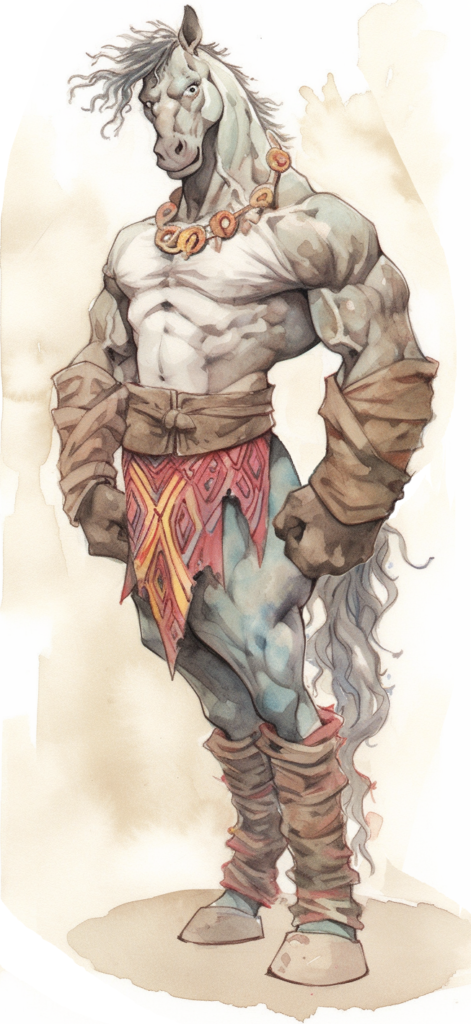
Most guardinals have animal heads, fur, tails and claws. Sometimes the head is more humanoid, but has bestial features. Our forms are also influenced by the plane where we dwell. For example, gardinals who frequent Bytopia tend more towards the humanoid—indeed, some so far as to only have ears and a tail of their respective animal—while those who spend their time in the Beastlands have more pronounced bestial features. We take our features from mammals, birds, reptiles, amphibians and fish—invertebrate guardinals are rarer.
A canny observer can notice some other commonalities in our appearance. There are plenty of Prime races that appear much like us—but there’s a difference between the leonal and the leonin. Most of the time it isn’t an obvious physical train, but a more subtle, spiritual level difference. Our fur feels smoother, or our eyes shine brighter. There is however one trait shared by guardinals that hints at our celestial origin—our claws and teeth are hard, and have a metallic sheen to them. This is a clue to our ability to damage creatures impervious to mundane natural weapons—namely, our nemeses the fiends.
The personalities, philosophies and social standing of guardinals are shaped by our unchangeable forms—that is to say, guardinals are never promoted or evolve to different forms, we are formed the way we will always be, according to our natural inclinations. This is something of which both archons and eladrin disapprove! This doesn’t mean that we lack ambition, or we restrict the freedom of those of us who want to choose a different path, but it does mean that guardinals of a certain animal affinity share many personality traits on common. Equinals are boisterous and hardheaded fighters, ursinal are slow and deliberate sages—and any exceptions in their ranks only prove the rule.
When it comes to our inner workings, we are not so very different to humanoids. Our kidneys don’t jump around our skull and our bones aren’t chiseled from marble. Certain races—especially my friends the insectoid bombyxials—may be more unusual than others, but variety is the spice of life after all. We guardinals consider ourselves to be the closest to the ordinary folk — not too lawful, not too chaotic, just humble and benevolent.

“Come to think of it, if some guardinals have predators’ heads, does that mean you hunt for food?“
Ah now this just reminds me, I forgot to explain something important. As “normal” as we may appear to be, we are still planar creatures. Outsiders, as you amusingly say. We do not age, nor can we truly die anywhere outside of Elysium. The spirit of a fallen guardinal simply finds its way back to the plane and reforms, after months of rest. Of course, we still don’t like to die, and being killed on Elysium puts us, as you say, in the “dead-book” permanently…
“Yes, yes, but what about food?“
First of all, guardinals do not need to eat or drink. Few planars beings do, even the ravenous slaadi are sustained by the chaotic energies of the multiverse. But we do still feel hunger and thirst. This is why we tend to our gardens and keep livestock.
Yes, despite us looking like animals, we don’t treat regular animals with the same degree of respect druidic folk might. I, for one, see nothing wrong with consuming ants. Mmm, ants. Not only that, so-called herbivorous guardinals are not above feasting on meat. Cervidals have nothing against mutton, no matter how comical it may sound to humans. Though, I must say that many of us are still vegetarian or even subsist on ambrosia much like archons. Not many want to kill innocent animals.
Fiends are another thing. In a fascinating quirk of our existence, many guardinals are perfectly able to stomach the flesh and ichor of these blasted creatures, together with their souls. Indeed, as any hezrou knows, eaten fiends don’t reform on their home planes. So there’s another reason for them to stay away from Elysium.
Sleep is beloved by all guardinals, but as they say, evil never sleeps. Fortunately, most guardinal fiend-hunters can go on without rest for months. When they get a chance to live in peace, they may sleep for 22 hours a day to replenish their energy. I can’t afford to do this, though. I have my farm to get back to.
When it comes to breeding (I assume, you, as a human, is very interested), we are not chaste like the archons, and neither are we promiscuous like the eladrin. Although yes, every once in a while a guardinal might fall in love with a mortal. This affair might result in an aasimar or, as we tend to call them, an ardling. Such a hybrid possesses only subtle animal features, and these relate to their own nature, not to the shape of their celestial parent.
“I hear many outsiders are deeply magical in nature. Can the same be said about you?“
Yes, indeed, guardinals do have magical abilities. First of all, we have the ability to communicate telepathically with sapient creatures such as yourself, and with natural animals. Unnatural monstrosities such as owlbears and primitive creatures (like my beloved ants) are beyond our reach, however. Not only that, natural animals will never attack a guardinal, not even under magical compulsion.
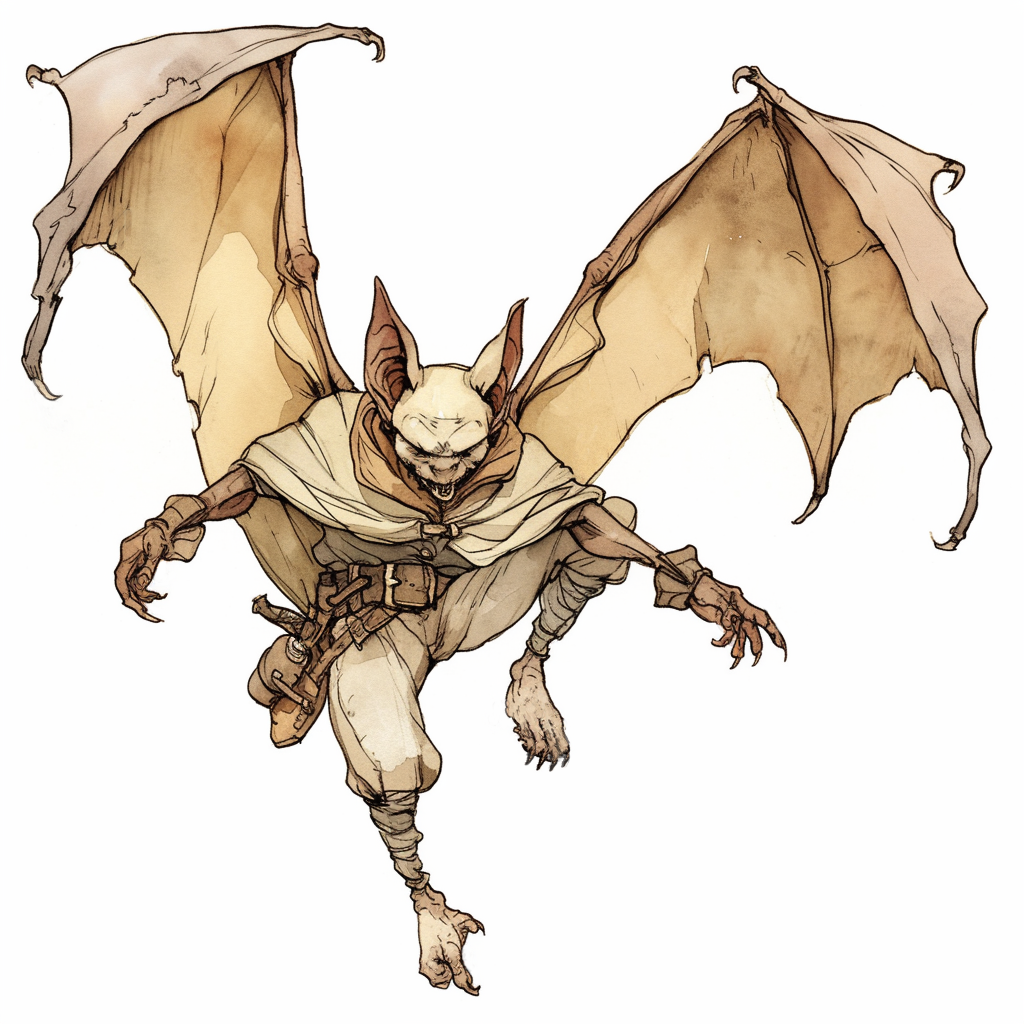
Of course, we have certain resistances. Like some of our celestial brethren, we are unaffected by lightning. Poisons and extreme cold are less harmful to us as well. While cold iron and silver have no unusual effect on us, we are vulnerable to gold—a root of all evil if there ever was one. It doesn’t sting us like silver does to fiends, but gilded weapons can easily harm our flesh.
Our magic is specific to each race of guardinals, but we have some powers are common. Almost all guardinals, except for the weakest ones, can channel their power to heal their allies by touch, yes like one of the mortal paladins. Great warriors and leaders among us can also bestow their righteous power to other worthy beings around them.
Aside from that, guardinals have different innate powers. Some choose to master them, others learn wizardry, become druids or even pledge their loyalty to gods.
“Phratry? What is that?“
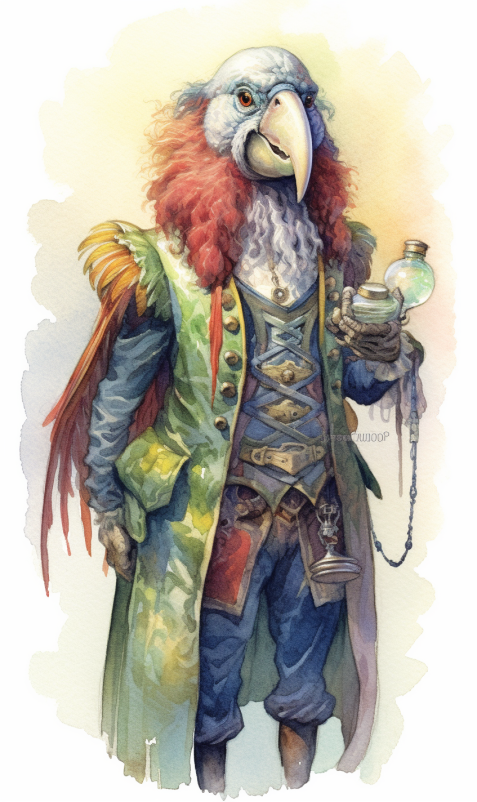
Well, like every other outsiders, we guardinals are organised in kinds or kins. But there are quite a lot of these kinds of us. So, we group these kins by what they do. Phratries aren’t true factions, they are more like loose congregations of communities that have common roles in society.
Yeoman can be thought of as commoners by other races, but in fact the yeoman phratry has no less authority than any other guardinal. We are of course able to collect food for ourselves, but for many guardinals it is more convenient to exchange goods and services for food and other necessary resources. Many yeoman guardinals devote themselves to growing food for hungry mortals—humanitarian aid is just as important as fighting fiends. Most yeomen tend to be poor combatants, we are a phratry who abhor violence after all, but there are always a exceptions.
Scouts are not only vanguards for our armies. These are smaller creatures, who sneak all through Elysium and observe everything that happens. Guardinal strike troops always employ some scouts. When there’s nothing threatening Elysium, scouts live their lives pretty much the same way other guardinals do. Except the bohlinidials, those bloods are huge are mysterious and never take time off from their strange role of scouting out the future, watching for possible threats yet to materialise.
Custodians are slow and sturdy defenders of Good. They often help other guardinals, during times of peace, with their superior strength, but when Elysium is invaded they become a formidable force. They are the bloods who are most likely to venture on daring quests to vanquish fiends or other foes. They are powerful in combat and aren’t afraid to get dirty. Some of them are loners, while other form tight-knit packs.
And finally, the phratry of Luminaries are our leaders, although not necessarily a ruling class. They typically live apart from other guardinal phraties in their own communities, and are only invoked when conflict erupts between different communities or leadership roles in grand campaigns or projects are required.
How do we live?
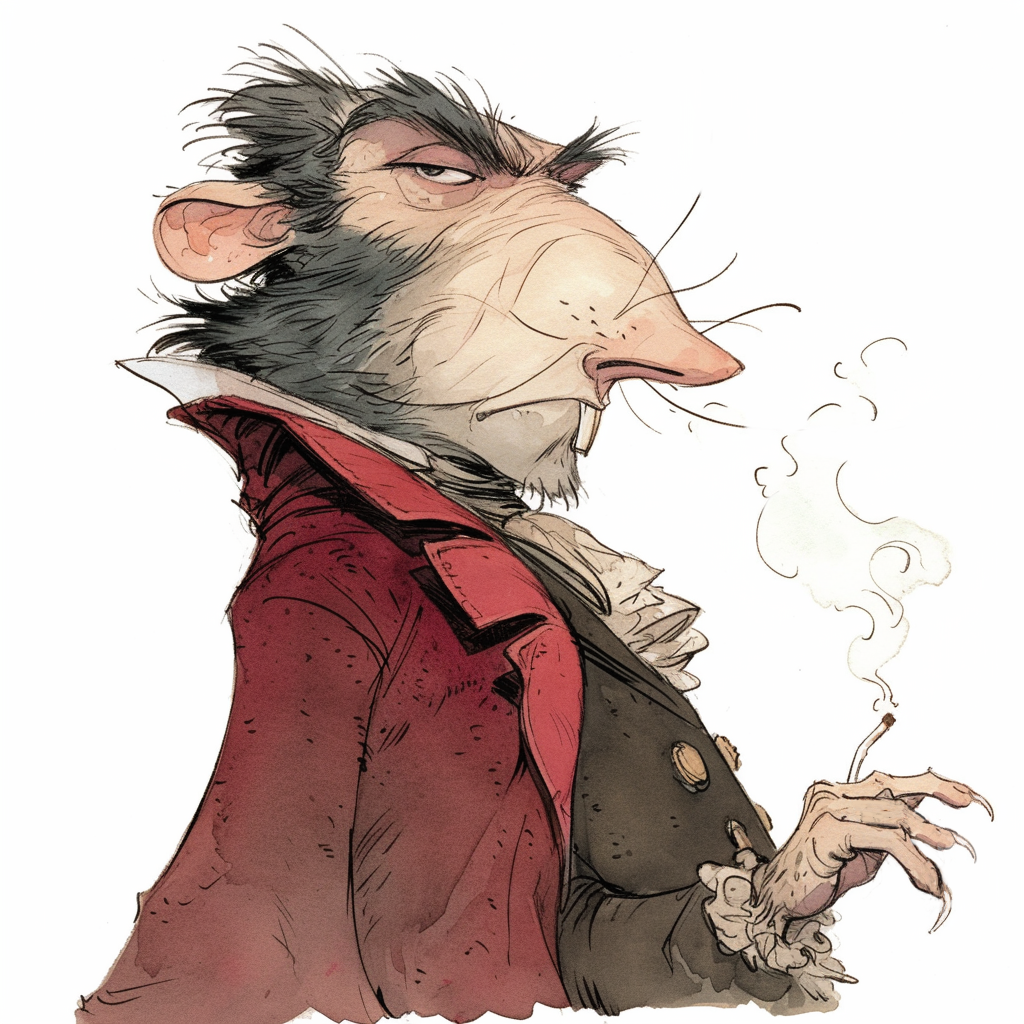
Guardinals are not numerous. In fact, we may very well be among the smallest groups of outsiders. This is why so many of us live in scattered communities or alone. I, for one, have a nice woodland cabin in Belierin, where I spend my time by myself. This doesn’t mean I am reclusive, for I find great pleasure in chatting with my neighbours. It’s just that I prefer to dwell by myself, serving none. Others of my kind may travel far and wide, offering their services to anyone. Many other guardinals live in herds or packs, under the leadership of the eldest and wisest guardinal. Of course, there are always oddballs, who serve powers, or live on other planes.
“So are the guardinals just a bunch of disconnected populations?“
Far from it, my friend. Guardinal communities maintain contact with each other by attending events held by luminaries. But this isn’t very suitable for coordinating a response in case of an invasion of Elysium, is it? Well, there’s another trick. It’s common knowledge that Elysium has a habit of testing planewalkers. Cutters who perform good deeds find they reach their destinations faster than those who don’t. The dark is that bending of space and time goes further than that. When something threatens Elysium, the pathways throughout the plane bend towards the place where the danger is greatest. Roaming bands of guardinals quickly find themselves being a part of a newly accumulated army. In a similar way, when guardinal leaders call for the council, they can quite literally ask their home to bring their allies to them.
Speaking of connections — how do you partake in the planar economy?
Well, industry isn’t our strongest asset. In our society we do not use money. Thanks to the fertile soils of Elysium and generational wisdom of guardinals, every one of us receives what we need to live comfortably for free. Of course, we are expected to pull our weight in our society, but those who cannot can count on the help of their brethren.
Guardinals trade resources through bartering with other Upper Planar societies. We don’t particularly like to handle money, especially gold—it’s the root of all evil, after all. Magical items, however, are useful for everyone. Of course, those who live on Bytopia or visit Sigil are tend to be more involved with the matters of trade. We grow grain and fruit, herd livestock and create magic items filled with the energies of our Blessed Fields of Elysium.
“Please tell me something about your language.”
The Elysian language is related to and influenced by the dialects of Celestial spoken in Bytopia, Arborea and the Beastlands, but also by cutters’ individual pronunciation. It can be challenging to understand the speech of some of the guardinals on account of us having different kinds of animal heads and mouthes which vary greatly. Fortunately, most guardinals not only know Planar Common, but have telepathic powers at our disposal.
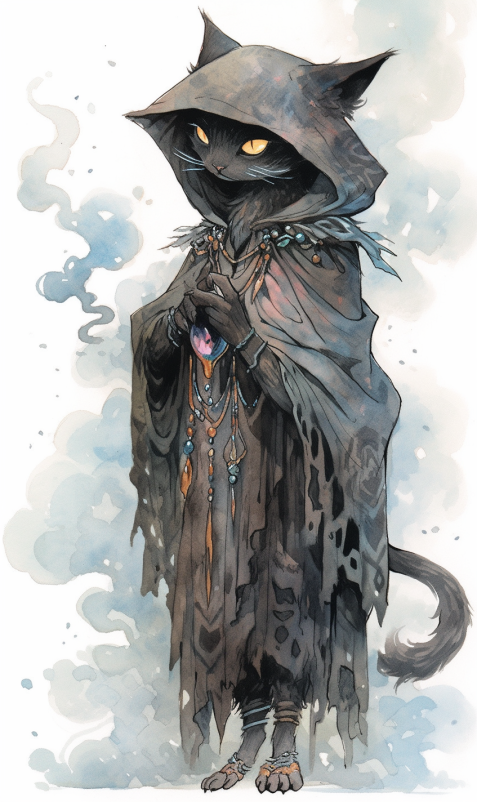
“Uh-uh. And what about your culture?“
Well, we are a simple and shy folk, for the most part. Lots of us write memoirs and little tales full of quiet joy and comfort. Raninials and other guardinals of similar disposition may prefer serenades and lyric poetry. The tales of Talisid and the Five Companions you might have heard are in fact written and spread by their mortal followers, the Guardians.
“By the way, is Talisid your leader?“
Well, not exactly ‘leader’. He is our Legend, first among equals. Talisid and his first five companions were among the first guardinals to arise, and throughout uncountable millennia they have accomplished thousands of heroic deeds. It was these bloods who imprisoned Father Hydra and stopped the War of Marble and Feathers. Think of them as the greatest adventuring party to have ever lived. The companions of Talisid have changed throughout the years—some died, others retired, but Talisid has always stayed.
Decisions of great importance to Elysium are made by the Council of Guardinals, which is assembled from all populations of guardinals on an electoral basis, and all of the paragons of the guardinal race. However, Talisid and the Five Companions also have their special seats and are greatly revered. Moreover, Talisid is also the Elysian representative in the Celestial Parliament—a gathering of all the major celestial races, which is called only in the times of direst need. But the Celestial Lion rarely attends regular council meetings. He prefers to roam the far reaches of Elysium with his loyal crew. It is said that no one can find Talisid if he doesn’t want them to.
“Reminds me of the General of Gehenna…“
(scoffs) That’s quite offensive of you!
“Apologies. Can I ask you a philosophical question? What do you think makes the essence of what ‘being a guardinal’ is?“
This is one great question, my friend! We are devoted to our ideals of goodness—kindness, generosity, love of people and nature and hatred of all evil. The latter part is what separates us from our celestial peers. We believe in decisiveness against evil. Our venators conduct lightning-speed raids against evil in the Lower Planes, our custodians protect settlements on the Prime and in the Outlands, and our yeomen and adepts help to rebuild burgs, ravaged by the Blood War. We don’t interfere in conflicts between fiends—history shows it never goes well. But we still maintain outposts on Lower Planes, even if they do have a habit of drawn into Outlands, such as White Beacon in the Pluton and Way Out on Cathrys.
But no one is truly perfect, and even guardinals aren’t without fault. On Elysium we live slow, peaceful lives, but it’s a place where there’s not much that can invoke sadness or anger. Perhaps this is why our ilk has a tendency for falling into stereotypes and putting habit before reason. This has worked well enough to protect us against fiendish schemes, but has been less successful when we work with Primes. Eladrin and archons sometimes chastise us for our ways—but we know they do it in good faith and make sure to listen to their advice. It’s what separates celestials from fiends, after all. Evil always leads one way—to misery and destruction—but Good has a thousand ways to come into existence, and there may not be the single best one among them.
What do we think of others?
Archons — These bloods are great allies in our eternal pursuit. I personally find their bureaucracy is ill-suited for quick movements against fiends. Not to mention how secretive they are…
Eladrin — I’ll be honest, sometimes eladrin get on my nerves, and I’m not the only one to say it. But even if you can’t always count on them, they possess great wisdom and insight.
Aasimon and asuras — These races have quite a history with guardinals. Millenia ago, conflicts between Upper Planar powers erupted into a war between these two races—the event called War of Marble and Feathers. Guardinals were instrumental in bringing this embarrassing fighting to the end—Talisid himself brought Zaphkiel and Queen Morwel together to petition Powers to stop their underlings. This was the beginning of the Celestial Concordance—an alliance of all celestial races, brought together to solve their differences and amplify each other’s strength. Since then aasimon and asuras hold us in great respect. Although, even now there are some, who hold a bit of a grudge towards us… I’m not pointing any fingers.
Fiends — We hate baatezu and tanar’ri equally. They are needlessly cruel, deceivingly predictable in their disposition towards law or chaos, so familiar, yet so incomprehensible to creatures with even a sliver of goodness in their heart. But most of all, we despise ‘loths.
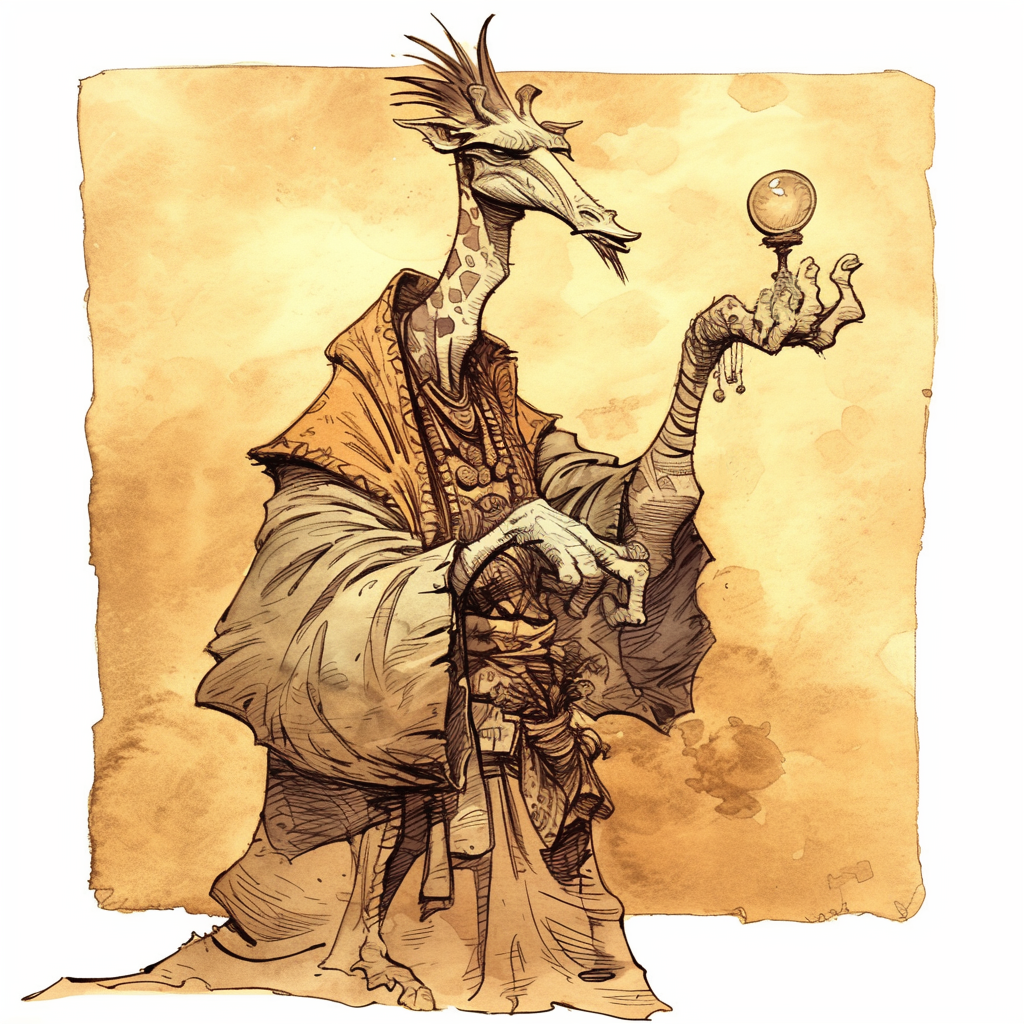
Yugoloths — These abhorrent fiends are our opposite in so many ways. When we are devoted to good, kindness, making sure that everyone gets enough, yugoloths worship their own ideal of evil, indifference so complete it always leads to cruelty and twisted ideas of every creature getting “what they deserve” (or rather, what they can get before someone else bobs them). And what’s worse—their schemes are so hard to dismantle. Most cutters don’t even seem to believe that they have any schemes! But don’t fall for ‘loth propaganda. We guardinals have made many successful strikes against them, and despite their insistence that our actions have only brought their schemes closer to fruition, no ultroloth has ever been made richer from our interference. And best believe we still have a fighting chance.
Modrons — The forces of Mechanus confuse even the most learned of us. We have no clue what is the purpose of their Marches, and many are suspicious of them. We have arrangements with modrons, and they ignore places where guardinals gather.
Slaadi — It may be unwise to blame chaos-toads for the destruction they cause. Most slaadi aren’t malicious—they just can’t comprehend or enjoy civilisation, and we can manage to leave them alone. Nonetheless, they aren’t welcome on Elysium.
Rilmani — These berks with their preposterous ideas of “balance”! They think themselves wise mediators, but their meddling and lack of moral judgement only strengthens evil! Can’t they not see how powerful it already is?
Powers — Like archons and eladrin, we are justifiably suspicious of powers. No single being should be allowed this much influence over reality. If there’s one thing I could appreciate about yugoloths, it would be how they’ve managed to keep evil powers in line. That aside, many of us do work in tandem with deities, especially the Egyptian pantheon. Chant goes that several of them are in fact ascended guardinals themselves.
Primes — There’s a stereotype that guardinals are dismissive of mortals, because they are unable to reach our impossible moral standards. For some less intelligent of us that may be true. But the wisest guardinals know very well that it’s Prime Material Plane that defines all others, and every living being there deserves respect. We rarely enter the Material Plane, but when we do it’s a great crusade to save worlds from a truly monstrous threat. There is one more way we influence the Prime, but it is worth a whole another chapter.
It is also valuable to mention Guardians. They are a planar sect who were understandably inspired by guardinals, and took it upon themselves to aid us in defending Elysium, and helping people all over the Multiverse. We appreciate their help, even if they sometimes get a little bit too devoted.
Do guardinals ever fall?
It isn’t as uncommon to find a renegade guardinal, than, say a rogue modron. Some Clueless even speculate that many animal-human looking planars—warden archons, vrocks, arcanaloths and even slaadi—have descended from rogue guardinals. A preposterous notion, if there ever was one, if you ask me.
Nevertheless, guardinals that tend towards law or chaos do exist, and we aren’t bothered by them—unless they make an effort to spread their worldview.
Neutral guardinals are rare indeed. Our poeple tend to think in terms of moral absolutes, and neutrality requires some kind of relativist thinking. Morally neutral guardinal would probably end up isolated from their peers. Evil guardinals are mercilessly hunted down by venators. Such abomination shouldn’t exist—good thing it almost never happens.
The Cradle Worlds
Now we’re getting to the real chant. Say, are you familiar with the main principle of Outer Planes?
“You mean Rule of Three or the Center of All?…“
No, I mean the idea that belief shapes everything, at least here on Outer Planes. And tell me, where does most of the belief comes from?
“The Prime?“
Exactly. It is not enough to fight for Good on the Outer Planes. We have to make sure people on the Prime Material Plane know what Good is and believe in its triumph. If they don’t, we will be changed ourselves before we know it—and this change may not be for the better.
And that’s what we do. Our operations on Lower Planes are so small in size are in part because our efforts are devoted to maintaining the Cradle Worlds. We search for the worlds, where sapient life has barely begun and prepare them. We shield those planets with magical veils that block access to all other Planes and establish outposts around them to prevent invasions from the Wildspace.
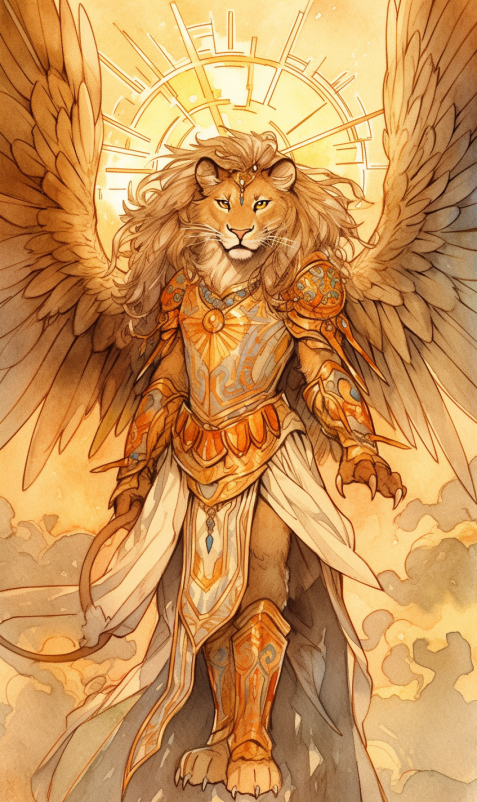
Then, guardinals appear before young tribes as teachers and patrons. Along with knowledge of arts and crafts we teach them lessons of understanding, empathy, charity and hope. There’s another benefit to this—denizens of this realm can offer their dead to us—souls of those dead are claimed by us and may become new guardinals.
When time comes, and we can be sure our lessons stick, we withdraw into our cosmic watchtowers—but still keep watch. At this point, religions begin to appear, and when there’s a religion, you get powers. Once they mature, we are unable to keep them at bay, so we slowly lift the curtain separating them from the Multiverse.
“Wait, if Cradle Worlds are separated from the rest of the Multiverse, where do souls of the dead go?“
Excellent question, my friend. Sometimes we or newly formed powers of these worlds create demiplanar underworlds that exist in the bounds of their home plane. Other times souls are merely kept in remote parts of the Crystal Sphere or even allowed to proceed through the curtain into the River of Souls and to the Underlands.
“Aren’t you afraid that other races will hear of this and try to sabotage these worlds?“
Oh, I have no doubt the fiends are well aware of our project. But they rarely take any action regarding it. See, to believe in Good you also have to believe in Evil. Fiends need the Cradle Worlds as much as we do, because they too would like evil to stay the same. Imagine how Planes would look, if neogi or psurlons were the dominant race on Prime.
In fact, the creatures who are most aggravated about Cradle Worlds are the dragons. See, dragons constantly appear on those new worlds, arriving seemingly out of nowhere. I suspect it may have something to do with Io and the myth of the First World. Dragons can be thought of as elementals of the Prime Material, and it means they are everywhere. However, we would like those dragons to not take over young cultures we try to nurture. Most agree to bide their time, but some have to be vanquished—often by our own paws.
The Lepirahs—our Great Progenitors
Now we are nearing the final chapter of this essay, and I’m going to speak about things of which I’ve only heard rumours. Lepirahs are described by our elders as gargantuan monstrous creatures, resembling butterflies or moths. Yet despite their size and inhuman appearance, they say their eyes shimmer with intelligence, and an aura of peace and hope surrounds them at all times. These are original creatures of Upper Planes, who precede all other and embody all that is Good.
Of course, a creature of this size is a terrifying combatant. It is said that such creatures can not only go on par with, but frighten baernoloths themselves. Or at least they used to, in some bygone days. Nowadays, lepirahs do not reveal themselves to anyone except for creatures they deem worthy—mostly the high-ranking celestials.
Like all butterflies, lepirahs have two forms—larva and imago. But unlike butterflies, they can shift between them indefinitely—they only need to spend time in the cocoon. It isn’t known whether or not lepirahs can breed, but if they do, they probably don’t need a partner.
Some say there are many lepirahs, but most of them sleep deep beneath the surface of Elysium or maybe hidden away on some Material worlds or Elemental Planes. Others believe there’s only four left—one guardian for each Elemental Plane, or layer of Elysium. Whatever is the truth, one lepirah is known the be active to this day: the Mother of Waves, the Guardian of Thalasia.
Chant goes the Mother of Waves lives on a cliff somewhere in Thalasia. No one can find her realm, except for representatives of the Celestial Parliament. This is the place those high-ups gather in times of direst need. Even wilder rumours reckon that the Guardian of Thalasia is accompanied by two giants whose appearance is grotesque and horrible, who hide their faces under masks. These creatures are unwaveringly good and noble, and their looks are only unpleasant because they are the survivors from another multiverse—maybe the one obyriths crawled out from, or maybe the one beyond the Far Realm. Indeed, there are much more secrets behind the Upper Planes than it seems…
Source: Margarita.

The Guardinal Hunt of Ascension
Recorded from a conversation with A’kin, the arcanoloth so-called ‘Friendly Fiend’
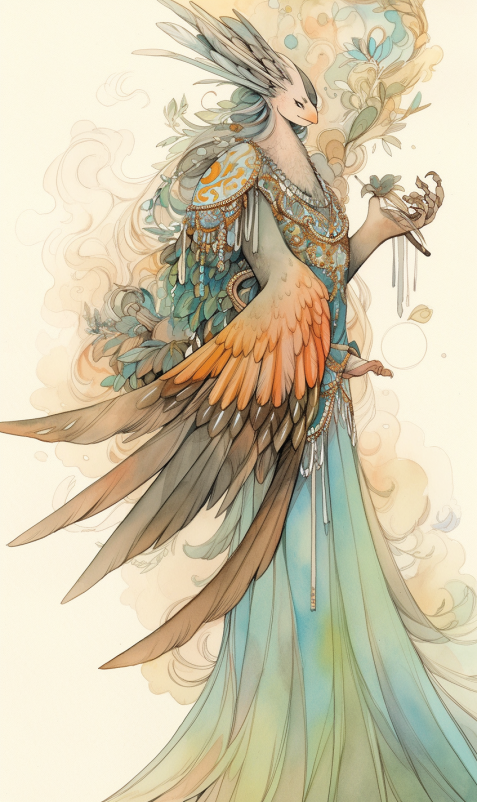
“Greetings friend! I’m glad you’ve come! I have the information you wanted. No, no payment is necessary, I’m happy to do it. One thing I have in common with my arcanoloth cousins is the love of learning. Don’t look so uncomfortable; I don’t deny what my people are, or their many faults. Unlike my relations, I serve the truth, no matter how unpleasant it may be.
“The guardinals are the race born of the peace and perfect harmony between accord and discord of Elysium. You know I love harmony. When I say they’re born of Elysium, I actually mean they have many means of generation; forgive me, but I can’t be less than exact when it comes to knowledge. Call it a little quirk of mine.
“The Hunt of Ascension is the guardinal ceremony of transformation. I have some contacts in Elysium who told me this story; they owed me a favour.
“First, the guardinal must truly be ready. They must understand all of the lessons of Good that its form can teach them. Eventually, the creature will contain more Goodness than their current form can hold. At that point, they will either go to the older guardinals and ask that a Hunt be staged, or the elders, in their wisdom, will come to the decision themselves.
“The Hunt begins at either dawn or dusk: a time of transition. A band of elders sniffs out the scent of Good spilling out of one of their fellows whose time is ripe. They utter cries of warning. The ascendant, aroused by instincts older than sentient intelligence, will flee. The elders pursue.
“The chase carries hunter and prey across the face of Elysium, and possibly beyond. Shoppers in Sigil’s Market Ward have been stunned more than once by the sight of guardinals sprinting between gates, and well-intentioned members of the Harmonium have received minor injuries from trying to help them catch the ‘fugitive.’
“The exact length of the Hunt is not important, though it may go on for days or even months. The ritual’s purpose is to exhaust the ascendant’s body completely; to use up the old form so that a new one can be born; to weaken the bonds holding it to its former self enough for the future to break free. Elder guardinals generally have more resources to draw on than their juniors, but if necessary they can and will bring in fresh Hunters to replace those who fall injured or exhausted.
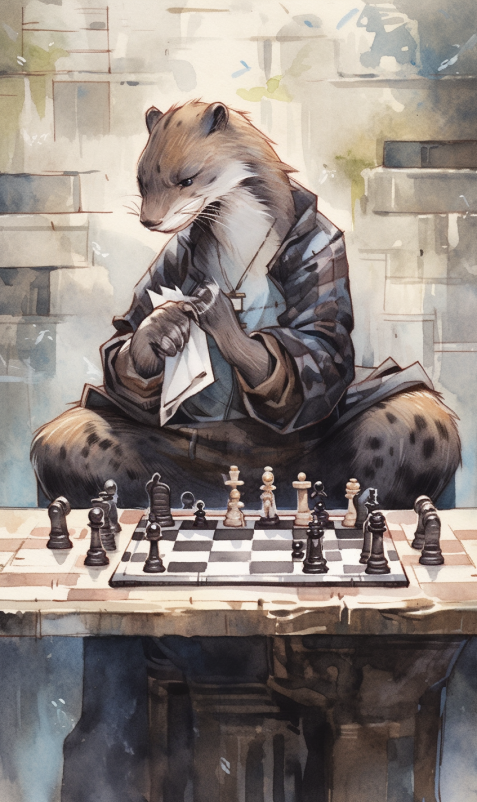
“If the ascendant gives up too soon, they cannot ascend, and they will sicken. If they cannot complete the ritual soon, they will become a twisted and pitiful thing, unable to do much more than shuffle along. These poor creatures usually end up in the dead-book before long.
“When and if the guardinal does finally finish the Hunt, only one more act is required by the Hunters; the ascendant must be quickly and (ideally) humanely slain and skinned. Out of the old skin will emerge the guardinal in its next incarnation, fresh and new. If the new form is to be much larger than the old, it will complete its growth within the next few days. Then it is ready to serve.
“The new form will vary according to need and desire. With guardinals, these two requirements are ideally one: a guardinal desires nothing so much as serving Good the best way it can. It’s thought that moon dogs, balæna, and even sunflies are actually forms that guardinals occasionally find useful. They are secretive on these matters.
“Well, friend. That’s the Hunt of Ascension. Now, I have a favour to ask you, one friend to another. When you do meet your target, tell him A’kin the Friendly Fiend sent you. He’ll be delighted to hear from an old acquaintance.”
Source: ripvanwormer. Please note the originator of this chant is a yugoloth. Even though—or perhaps because—he smiles as he speaks, this may or may not be complete screed.
Canonwatch: Many of the guardinals mentioned here are inspired by the agathions—Pathfinder’s name for NG animal-humanoid celestials—either 1e or 2e † or homebrew ‡ —more details to follow! I’ve taken the liberty of broadening some of the animal types and merging multiple creatures with similar characteristics together—for the sake of variety I suggest avorals can be birds other than hawks, and ursinals more than one species of bear, for example. But similarly to avoid the number of types of guardinal ballooning too greatly, combining multiple creatures like otters, beavers and seals into a single category keeps things a little more manageable. Re-skin them as required (perhaps an undiplomatic word considering seals…oops).

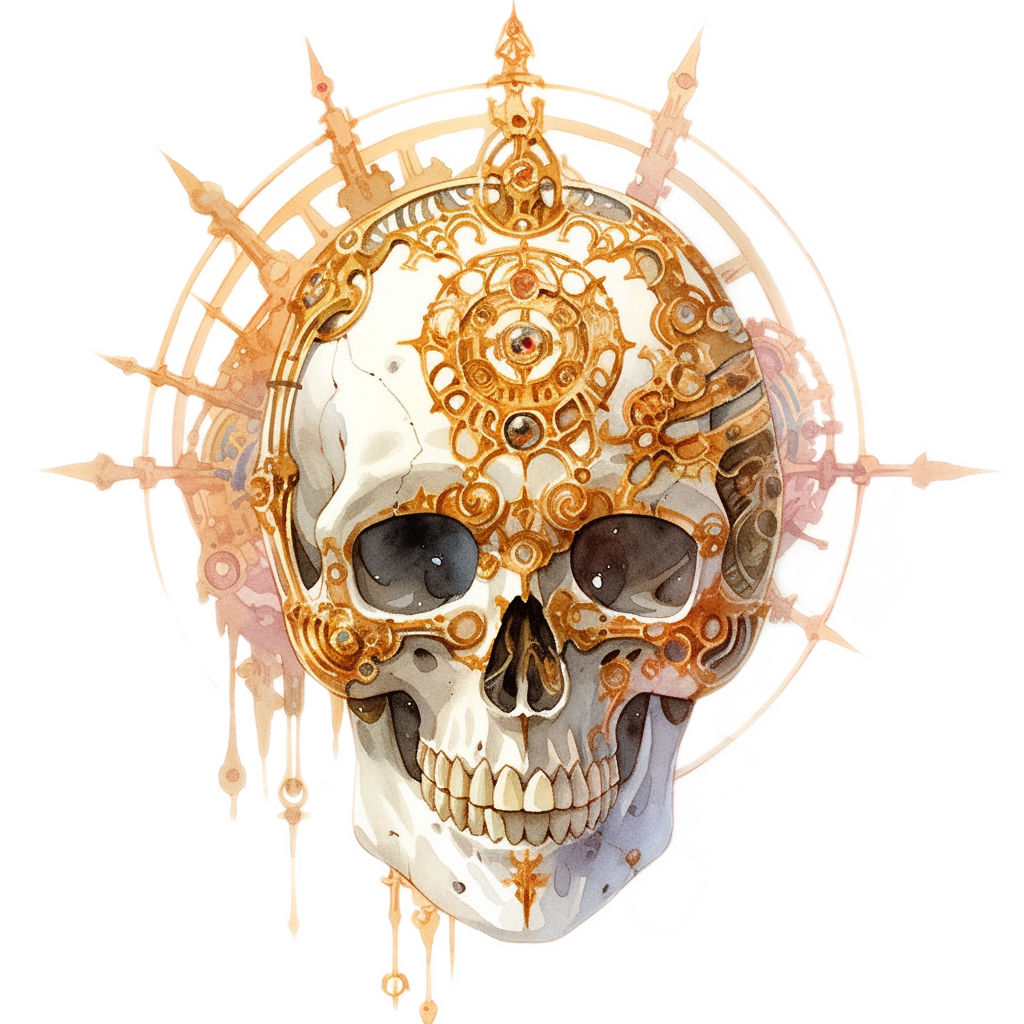
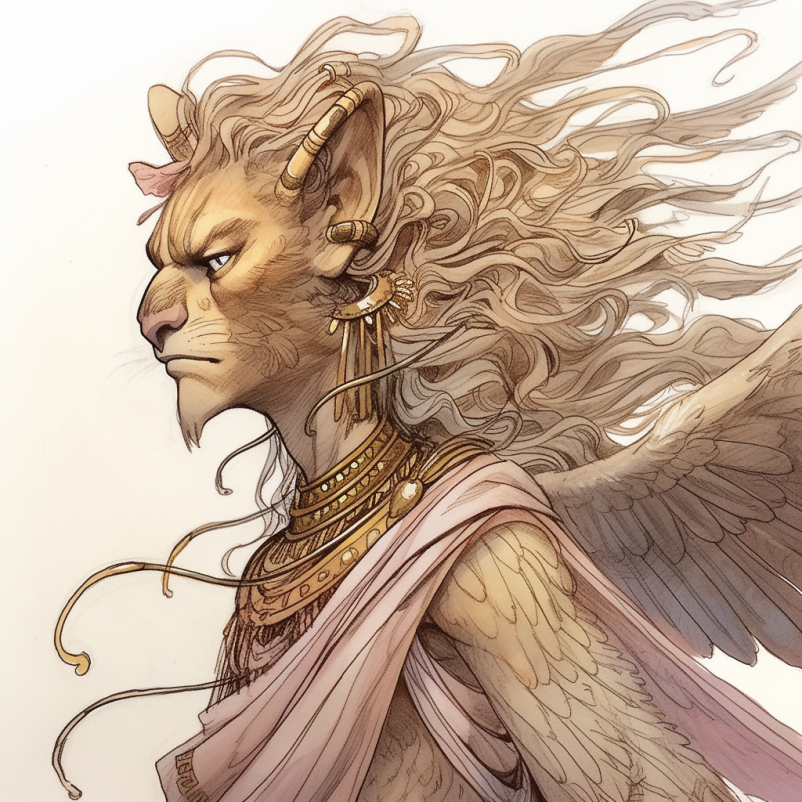
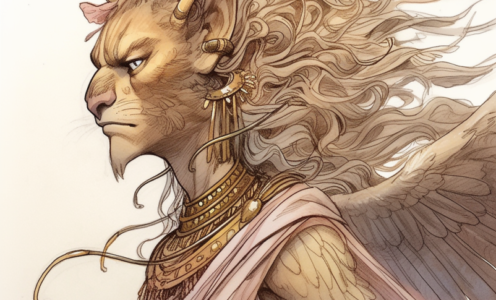
A ponderous thought:
If Guardinals are birthed or laid as eggs.. does that mean they spring forth fully-grown?
After all, they do not age, nor do they transform. This would suggest that all Guardinals are adult from inception.
Sounds like a harrowing pregnancy if that’s the case.
Oh… I seem to have made a blunder… Of course, guardinals start as babies, grow to maturity, but don’t get old and senile. However, baby guardinals don’t need to learn their language, as they have some innate knowledge and skills. While guardinals are born blind and unable to stand, they grow very quickly and become comparable to 10 year old humans after a few days and reach full maturity in less than 10 years